The Bay Trail Preview: Intel Atom Z3770 Tested
by Anand Lal Shimpi & Brian Klug on September 11, 2013 12:00 PM EST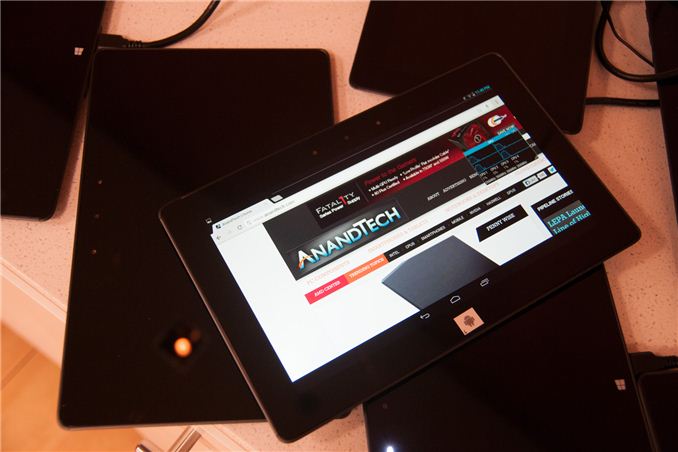
Earlier this year Intel unveiled Silvermont, its first true architectural update to Atom since its introduction in 2008. I won’t rehash Silvermont’s architecture here, but it’s designed to be a true test of Intel’s performance in the ultra mobile space. Leveraging Intel’s first 22nm SoC process and a very low power/efficient microarchitecture, Silvermont aims squarely at the latest Krait cores from Qualcomm and ARM’s Cortex A15.
Today Intel takes the next step forward, introducing the first tablet SoC based on Silvermont: Bay Trail.
Bay Trail takes up to four Silvermont cores, and for the first time in an ultra mobile Intel SoC pairs them with Intel’s own graphics IP. That’s right, rather than using a GPU block from Imagination Technologies, Bay Trail leverages the same GPU architecture as Ivy Bridge.
The first Bay Trail tablets will be shipping by the end of the year, across both Android and Windows 8.1. Intel expects Bay Trail to show up in tablets and 2-in-1s priced below $599, with everything above $599 falling under Haswell’s jurisdiction.
Bay Trail & Branding
Bay Trail, like all Atom platforms before it, will be available in multiple form factors. Unlike the Atoms of yesterday however, the SoC will carry Pentium and Celeron branding when used in notebooks and desktops. Intel didn’t disclose too much about its Silvermont plans in other form factors other than some basic naming:
Basically notebooks ship under the Pentium N3000 & Celeron N2000 series, while desktops will carry Pentium J2000 & Celeron J1000 branding. All Pentium SKUs seem to be quad-core, while Celeron SKUs will be available in both dual and quad-core versions.
Thankfully Intel shied away from introducing the same complexity with its tablet focused Bay Trail parts. All Bay Trail tablet SKUs carry Atom branding. There’s the quad-core Z3700 series and the dual-core Z3600 series.
Although Intel offers both dual and quad-core Bay Trail SKUs, they are both based on the same single physical design. In other words, dual-core Bay Trail parts are just die harvested quad-core parts. Intel isn’t disclosing die size or transistor counts, which is ironic (and disappointing) given that Apple just disclosed both (or at least relative magnitude of one) for its A7 SoC.
Internally, the Bay Trail design is pretty nice. There are either two or four cores enabled, each pair with a shared 1MB L2 cache (2MB total for a quad-core part). Intel is following the unfortunate lead of everyone else in the mobile industry and advertising max turbo frequencies exclusively.
Thankfully Intel hasn’t yet decided to obfuscate max non-turbo frequencies:
| Bay Trail Turbo Speeds | ||||||||
| Z3770 | Z3770D | Z3740 | Z3740D | Z3680 | Z3680D | |||
| Max turbo frequency | 2.39GHz | 2.41GHz | 1.86GHz | 1.83GHz | 2.0GHz | 2.0GHz | ||
| Max non-turbo Frequency | 1.46GHz | 1.5GHz | 1.33GHz | 1.33GHz | 1.33GHz | 1.33GHz | ||
In general you’re looking at 1.33GHz - 1.46GHz max non-turbo frequencies, with Bay Trail being able to turbo up to anywhere between 1.83GHz and 2.40GHz depending on SKU.
Although the core architecture is 64-bit in design, there will be no OS support for 64-bit Bay Trail at launch. Windows 8.1 with Connected Standby appears to still be 32-bit only, and obviously Android is 32-bit only at this point as well.
The memory interface is fairly ridiculous by mobile standards. You either get two 64-bit LPDDR3 channels (128-bit total width) or a single 64-bit DDR3L channel. In the case of the former, that’s the same memory bus width as Apple’s A5X/A6X line of SoCs as well as the standard Core i3/i5/i7 parts. Max supported memory frequency is 1066MHz in dual-channel LPDDR3 mode, or 1333MHz in single-channel DDR3L mode. The only benefit to the latter is really cost, as Bay Trail will purportedly show up in some very cheap devices.
The GPU is Intel’s own Gen7 graphics core, a cut down implementation of what we first saw in Ivy Bridge. I suppose it’s premature to expect Merrifield, Bay Trail’s smartphone counterpart, to also use Intel’s own graphics core but it’s clear this is the direction Intel is headed in - and away from licensing IP from Imagination Technologies.
Rather than 16 EUs in the Ivy Bridge GT2 configuration (HD 4000), Bay Trail’s HD Graphics core ships with 4. The 4 EUs are otherwise effectively identical to what we found in Ivy Bridge. The GPU can dynamically scale frequency and share power between itself and the CPU cores. Minimum GPU frequency on Bay Trail is 311MHz and a max GPU frequency of 667MHz (or 688MHz for the DDR3L SKUs).
Intel is quick to point out that Bay Trail’s GPU supports DirectX 11 and OpenGL ES 3.0. Unfortunately this support list appears limited to Windows. Under Android, it’s unclear whether or not Bay Trail will ship with anything above OpenGL ES 2.0 support. The same goes for GPU accelerated Renderscript. Bay Trail supports up to 2560 x 1440 displays over eDP1.3/DP1.2, or 1080p over HDMI. Panel Self Refresh is also supported.
Video encode and decode blocks also shifted away from Imagination in Bay Trail. Both IP blocks are custom from Intel now. The ISP (Image Signal Processor) is from Silicon Hive (an Intel acquisition).


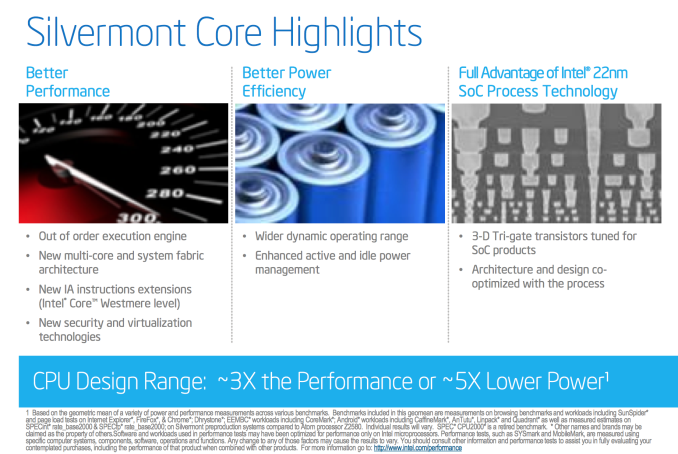
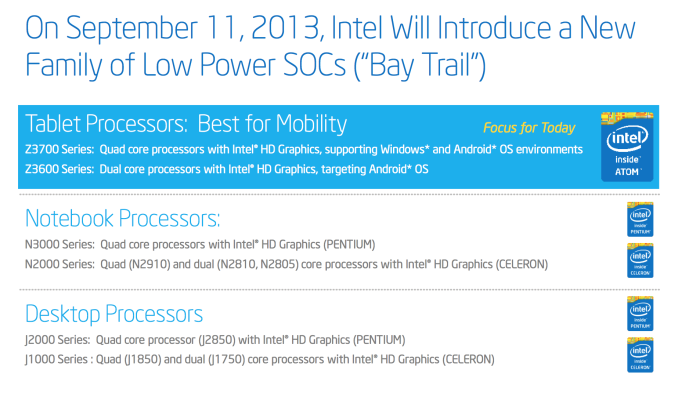
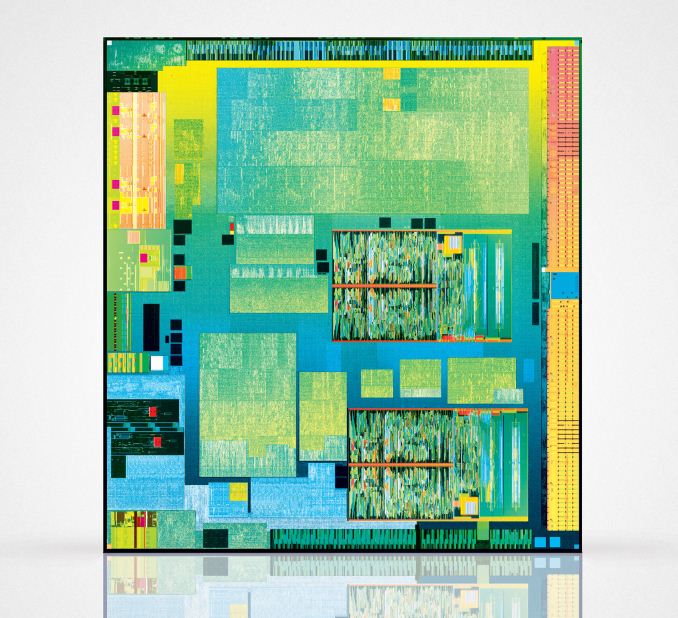
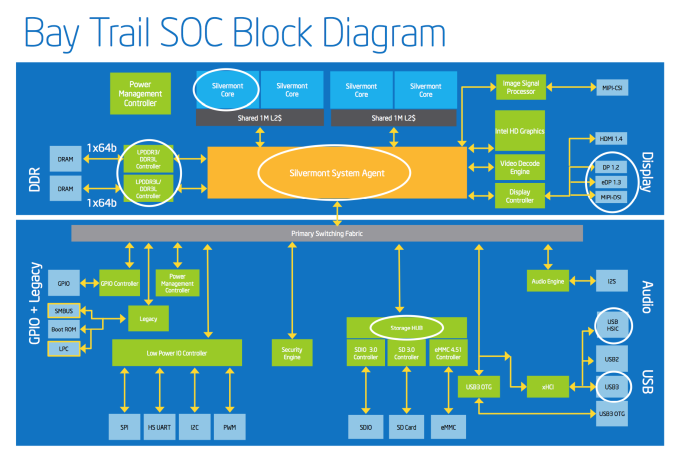
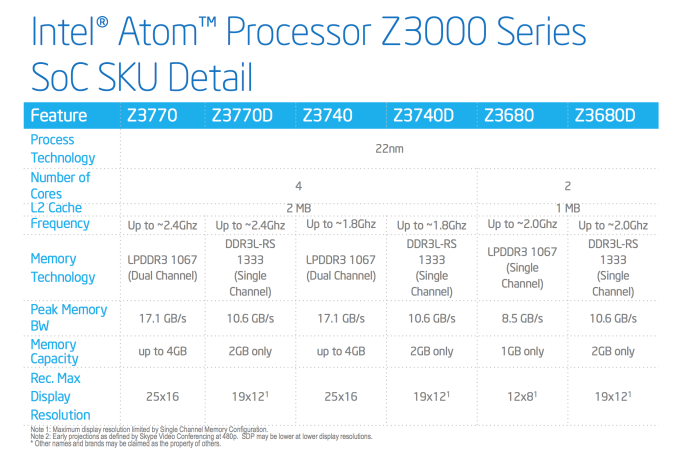
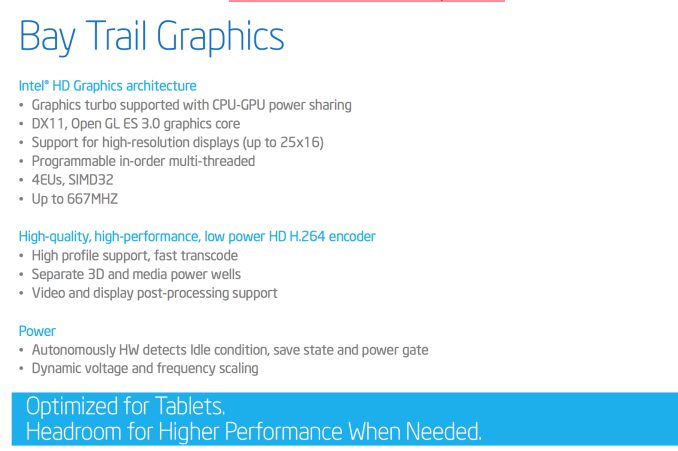
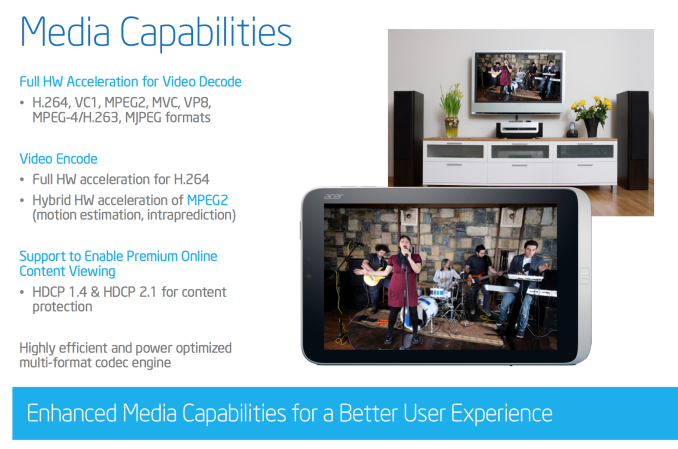








190 Comments
View All Comments
drothgery - Friday, September 13, 2013 - link
Some Silvermont-core based chips will have Pentium or Celeron branding, FWIW.phoenix_rizzen - Monday, September 16, 2013 - link
Yeah, because "Celeron" is so much better when it comes to the "everyone knows it's horrible" viewpoint. And "Pentium" has become so overloaded as to be meaningless.To be honest, Intel needs to just eliminate the Atom, Celeron, and Pentium brands, and add a new Core i1 series to replace it.
NotaFanBoy - Wednesday, September 25, 2013 - link
+1hakime - Thursday, September 12, 2013 - link
"Intel’s HD graphics in Bay Trail appear to be similar in performance to the PowerVR SGX 554MP4 in the iPad 4."It's really a bold affirmation given that from your own numbers the Bay trail is significantly slower than the PowerVR SGX 554MP4 in all but one test.
HisDivineOrder - Thursday, September 12, 2013 - link
I think Intel needs to make a big, big push to get a Bay Trail chip into a Google Nexus product of some kind (possibly to let Google iterate on the OS a bit with regards to x86 CPU's), which was the original reason for Nexus btw.I also think Intel needs to convince MS with extremely low cost chips to make a Surface with Windows 8 and Bay Trail. Just dump Surface based on RT or knock it down to rock bottom pricing. Like $99 for Surface RT, $199 for Surface Pro Bay Trail, $499 for Surface Pro I3, $699 for Surface Pro I5, and $999 for Surface Pro I7 with Iris 5200.
That's if they insist on keeping RT around rather than just fold its development into Windows Phone, merge the two, and quietly take RT as a tablet OS around back behind the shed where the sun is just coming up over the trees, where the wind is blowing a little, and MS tells RT for tablets to look out through the trees.
Birds would start and fly away suddenly as a gunshot echoes.
Sad, but knowing it was for the best, MS could take the remains of RT to frankenstein-stitch into Windows Phone. It's not like it'd be the first time they rebooted a phone OS AND not the first time they stitched unrelated things together into a new product.
dwade123 - Thursday, September 12, 2013 - link
GPU is still Intel's Achilles Heel.Hrel - Thursday, September 12, 2013 - link
Seems they are weakest in GPU, as usual. I'd like to know why in one test they get clobbered by the Nvidia shield for Physics but then in another physics test the clobber Nvidia. Same thing happens with graphics. You'd think they'd be consistently better/worse at one or the other.With Nvidia releasing their first "real" mobile GPU soon (Q2 2014 I believe) Intel is going to have to at least double GPU performance in under a year to stay competitive. I doubt they can do that.
With that said, I really hope 3rd party OEM's starting using Bay Trail's CPU but packaging an Nvidia GPU.
It really is too bad Intel and Nvidia had that falling out over who buys who and is worth what and all that. If they were working together, the best CPU engineers with the best GPU engineers, just think what could have been.
nofumble62 - Thursday, September 12, 2013 - link
"With Nvidia releasing their first "real" mobile GPU soon (Q2 2014 I believe) Intel is going to have to at least double GPU performance in under a year to stay competitive. I doubt they can do that"I thought they have tripled the graphic performance of CloverTrail.
snarfbot - Thursday, September 12, 2013 - link
would it be possible in the future to put each devices soc in parenthesis or something in the charts, ideally with nominal frequencies, core count etc. that way it would be possible to evaluate comparable products from other manufacturers that you didnt directly review.like shield (tegra 4, a15 quad/1.9ghz, 72core/??mhz..) something like that. also even though this is a tablet review they still use largely the same hardware as smartphones, so it would make comparing actual hardware alot easier. even considering something like the moto x, with the frequency information next to the cores its performance would make sense relative to the rest of the products on the graph.
as it is now, you cant really draw any conclusions unless you cross reference the items listed with their specs on wikipedia or even worse random android forums.
so please please please, more info please.
sanketh - Friday, September 13, 2013 - link
I am just curious, Why does anand tech use the base frequency when intel is advertising its baytrail with the boosted frequency? Is the boost disabled? Can you provide system configurations for the Windows 8.1 benchmarking?